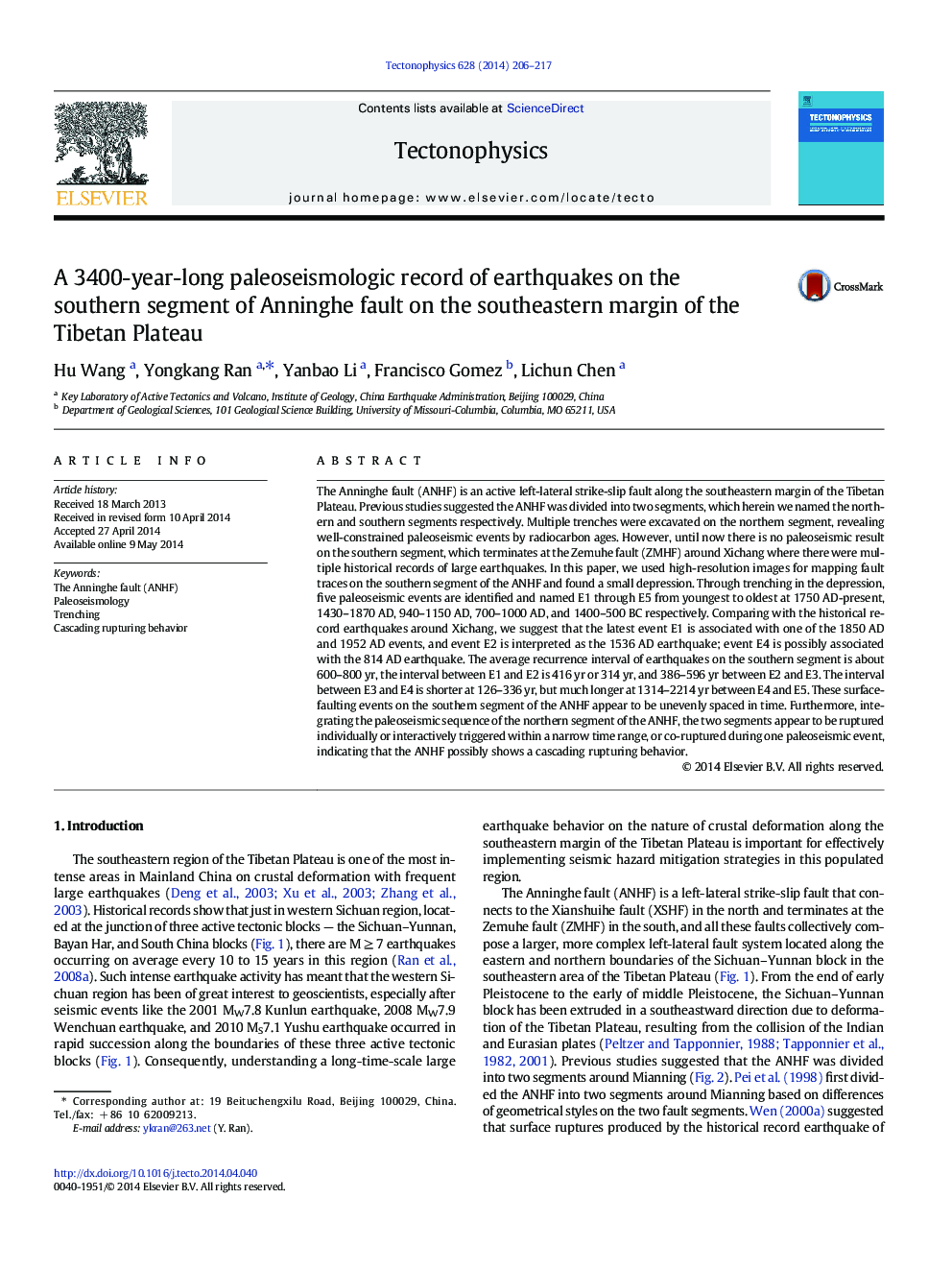| Article ID | Journal | Published Year | Pages | File Type |
|---|---|---|---|---|
| 4691939 | Tectonophysics | 2014 | 12 Pages |
Abstract
The Anninghe fault (ANHF) is an active left-lateral strike-slip fault along the southeastern margin of the Tibetan Plateau. Previous studies suggested the ANHF was divided into two segments, which herein we named the northern and southern segments respectively. Multiple trenches were excavated on the northern segment, revealing well-constrained paleoseismic events by radiocarbon ages. However, until now there is no paleoseismic result on the southern segment, which terminates at the Zemuhe fault (ZMHF) around Xichang where there were multiple historical records of large earthquakes. In this paper, we used high-resolution images for mapping fault traces on the southern segment of the ANHF and found a small depression. Through trenching in the depression, five paleoseismic events are identified and named E1 through E5 from youngest to oldest at 1750Â AD-present, 1430-1870Â AD, 940-1150Â AD, 700-1000Â AD, and 1400-500Â BC respectively. Comparing with the historical record earthquakes around Xichang, we suggest that the latest event E1 is associated with one of the 1850Â AD and 1952Â AD events, and event E2 is interpreted as the 1536Â AD earthquake; event E4 is possibly associated with the 814Â AD earthquake. The average recurrence interval of earthquakes on the southern segment is about 600-800Â yr, the interval between E1 and E2 is 416Â yr or 314Â yr, and 386-596Â yr between E2 and E3. The interval between E3 and E4 is shorter at 126-336Â yr, but much longer at 1314-2214Â yr between E4 and E5. These surface-faulting events on the southern segment of the ANHF appear to be unevenly spaced in time. Furthermore, integrating the paleoseismic sequence of the northern segment of the ANHF, the two segments appear to be ruptured individually or interactively triggered within a narrow time range, or co-ruptured during one paleoseismic event, indicating that the ANHF possibly shows a cascading rupturing behavior.
Keywords
Related Topics
Physical Sciences and Engineering
Earth and Planetary Sciences
Earth-Surface Processes
Authors
Hu Wang, Yongkang Ran, Yanbao Li, Francisco Gomez, Lichun Chen,
